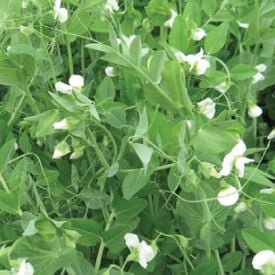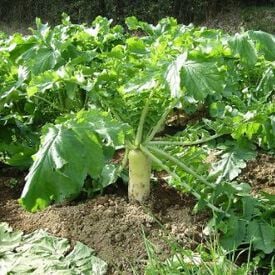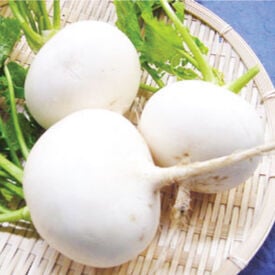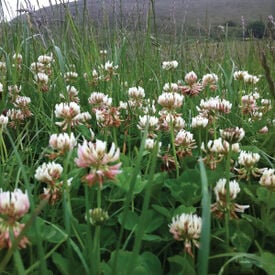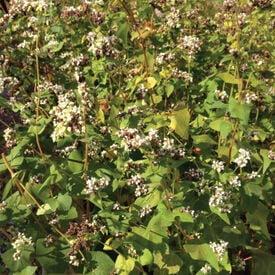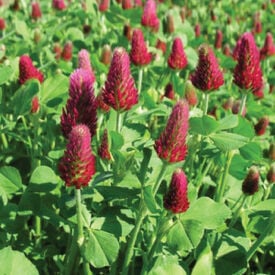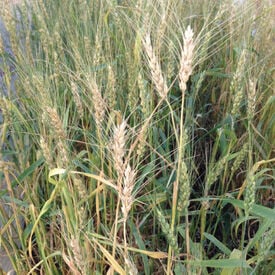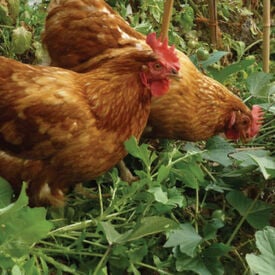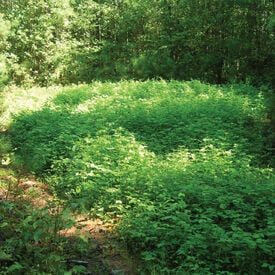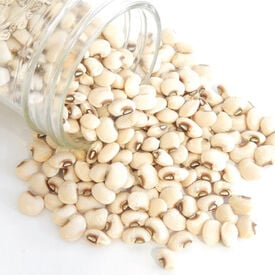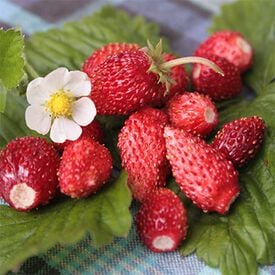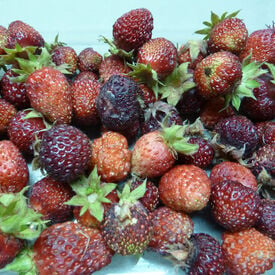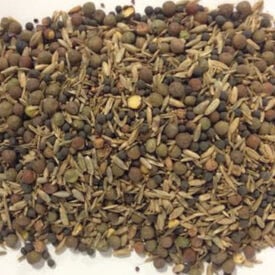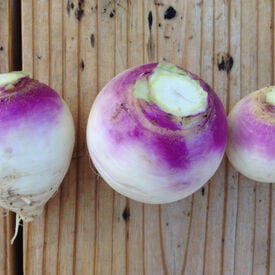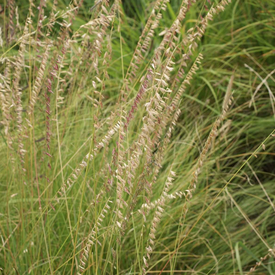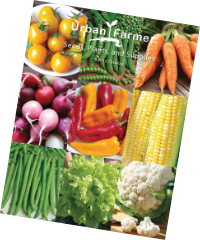The Austrian Winter Pea, sometimes called black pea or field pea, is a great cool season legume for cover crops, wildlife and winter grazing! This cool-season, annual legume has good, nitrogen-fixing capabilities. The Austrian Winter Pea is a low-growing, viny legume which has been shown to fix over 200 pounds of nitrogen per acre per year. It has hollow, slender and succulent stems, 2 to 4 feet long. The foliage is pale green, and the flowers are colored, usually purple, pink or reddish. Uses: Chicken forage, deer attractant, forage, green manure, nitrogen fixation, no till, organic matter (biomass), weed suppression
The Jackhammer Radish is a fast growing daikon radish variety that is a great scavenger that will start germinating immediately! This variety is very easy to grow. The Jackhammer Radish is good for winter kills and turns into great biomass. Radish (Brassica): Cool Season, broadleaf, Annual, Upright and spreading habit, Root Crop Uses: Nitrogen Scavenger, Green Manure, Forage, Organic Matter, Weed Suppression
The Seven Top is a tender, round and beautiful white globed turnip variety that produces consistently for a long period! This turnip is the best variety for producing masses of fine-flavored, old-fashioned, turnip greens that makes the ultimate southern staple!
The White Dutch Clover is a perennial clover variety that is a customer favorite for controlling erosion while protecting the soil! This legume is a living mulch of permanent cover that spreads by stolons. Grow low so takes close mowing and grazing. The White Dutch Clover benefits bees and insects as well as fixes nitrogen. Uses: Bees & Beneficial Insects, Chicken Forage, Deer Attractant, Erosion Control, Forage, Green Manure, Nitrogen Fixation, No Till, Weed Suppression
The Medium Red Clover is fast to establish and can be grown in most soil types as well as sowed in spring, summer or fall! This clover works well for hay or silage. The Medium Red Clover can be used as a cover crop between rows of vegetable crops if mowed to maintain manageability. This clover can fix up to 150 lb. of nitrogen per acre. Uses: Bees & Beneficial Insects, Chicken Forage, Compaction Control, Deer Attractant, Erosion Control, Forage, Green Manure, Nitrogen Fixation, No Till, Weed Suppression
The Common Buckwheat is a grain that can be planted late spring to early summer and improves top soil and an effective choke weed! This variety establishes quickly and matures in 60 days. This buckwheat accumulates phosphorus and and potassium for following crops and is frost sensitive. Buckwheat (Fagopyrum esculentum Moench): Cool Season, Grain, Annual, Upright growth habit, Enhances soil P availability,Crude protein: straw 5%, grain 13% Uses: Bees & Beneficial Insects, Green Manure, No Till, Organic Matter (Biomass), Weed Suppresion
The Crimson Clover is an attractive winter annual that can be planted fall or early spring and will protect and improve the soil. This good nitrogen fixer (70-150 lbs per acre per year) blooms showy crimson flowers in late spring that are an excellent source of nectar for bees. This variety inter-seeds well with grass, making it a great way to ready your vegetable garden for the spring or beautify a landscape! Not to be confused with the tough perennial clovers that can take over a meadow. Uses: Bees & Beneficial Insects, Chicken Forage, Compaction Control, Deer Attractant, Erosion Control, Forage, Green Manure, Nitrogen Fixation, No Till, Weed Suppression
The Winter Wheat is a cool weather grain that is quick to germinate, cold tolerant and is adaptable to a wide range of soils! This wheat can be sown in late summer for erosion control and tilled under in early spring to add organic matter. The Winter Wheat is winter hardy nearly anywhere, and won't go to seed until its second year of growth. Use: Erosion Control, Green Manure, Nitrogen Scavenger, No Till, Weed Suppression
Growing your own forage for your chickens is a cheap, easy, and a highly nutritious way to feed your chickens. Chicken feed can be expensive to provide throughout the year. Growing your own from spring to fall provides high levels of nutrients that will make your eggs taste even better. Foraging chickens have a better balanced diet that creates better eggs and meat. This chicken forage blend is a mix of well balanced plants that chickens love to eat. Spread at 5 lbs. per 1,000-2,000 square feet. 100 lbs will cover 1 acre. Mixture includes: Annual Ryegrass, Perennial Ryegrass, Buckwheat, Flax, Millet, Forage Peas, Red Clover, Alfalfa
All of the seeds below are very good at attracting deer to your property! Buckwheat - Improves top soil and an effective choke weed! Plant late spring to early summer. Establishes quickly. Matures in 60 days. Accumulates phosphorus and and potassium for following crops. Frost sensitive. All below packages come in 1lb. bags. Crimson Clover - Winter annual protects and improves soil! Plant fall or early spring. A good nitrogen fixer (70-150 lbs per acre per year). Showy crimson blooms in late spring are an excellent source of nectar for bees. Inter-seeds well with grass. Austrian Winter Pea - A great cool season legume for cover crops, wildlife and winter grazing! Austrian winter pea, sometimes called "black pea" and "field pea" is a cool-season, annual legume with good, nitrogen-fixing capabilities. Austrian winter pea is a low-growing, viny legume which has been shown to fix over 200 pounds of nitrogen per acre per year. Peas - Grow regular old peas in your deer food plot. One of the most preferred vegetables for deer. Oats - Oats will kill off winter weeds and hold soil with a mat of vegetation! A high yielding oat that can produce over 100 bushels per acre. Plant anytime of the year. Deer will graze oats all year round. Barkant Forage Turnip - Great forage crop that provides high energy feed! Barkant turnips are an improved, early maturing, diploid turnip wtih a large purple tankard shaped bulb. Barkant turnips have a high leaf to stem ratio and and provide very high contentrations of protein, sugar content and leaf yields. Barkant Turnips are ideally suited for wildlife. Dwarf Essex Rape - A cabbage related plant that is a perfect grazer! Dwarf Essex Rape is a perfect grazer plant that will persist well after the first frost. Ready to pasture 6-8 weeks after sowing. Hairy Vetch - Sow with or without grain, grass or field peas! When sown late summer, grows fast and will attract wildlife. Hairy Vetch has rapid growth that makes it a good weed suppressant.
The Big Boy Purplehull is a high yielding, popular Southern cowpea that is great for home gardens. Big Boy Purplehull is a long podded variety with 13-16 peas per pod that are light tan in color and oblong shape. This is a good garden variety and is very prolific. If you are using for Nitrogen fixation we highly recommend using a cowpea inoculant. Try with cowpea inoculant for maximum Nitrogen fixation.
Red Wonder, aka Fraises des Bois, is a tasty Alpine Strawberry that is easy to grow from seed. Red Wonder is one of our favorites because it's considerably sweeter than most strawberries. An everbearing strawberry plant that produces all summer long.
Musk Strawberry (Fragaria moschata), also known as Hautbois strawberry, is an old European heirloom dating back to the Renaissance, prized for its intense, musky-sweet flavor and rich aroma. The small to medium-sized berries are soft, juicy, and deep red when fully ripe, with a complex taste often described as a mix between strawberry, raspberry, and tropical fruit. Plants grow 8–12 inches tall with spreading runners and thrive in full sun to partial shade in fertile, well-drained soil. Sow seeds indoors in late winter, lightly pressing them into the surface, and transplant outdoors after frost; consistent moisture and mulching help maintain fruit quality. Taking about 150–180 days to mature from sowing, Musk Strawberries are ideal for fresh eating, gourmet desserts, preserves, and adding an old-world delicacy to the garden.
A multipurpose cover crop blend that is sowed in fall! This wonderful blend will help with nitrogen fixation, adding organic matter and weed suppression. Contains a blend of Austrian Field Peas, Crimson Clover, Hairy Vetch, Annual and Winter Rye. Cut right after flowering in spring and till into soil for green manure. (30% Field Pea, 20% Crimson Clover, 20% Hairy Vetch, 15% Annual Rye, 15% Winter Rye) Seed Coverage: - 5 lbs covers 2,000-4,000 sqaure feet - 100 lbs covers 1-2 acres Uses: Green Manure, Nitrogen Fixation, No Till, Organic Matter (Biomass), Weed Suppression
The Purple Top White Globe Turnip is a beautifully purple and white colored turnip that is the best tasting turnip around! This turnip variety has a fine grained root that can grow as big as a baseball! The popular Purple Top White Globe is an excellent yielding turnip that is a great fall crop that gets even better with cold weather.
A spectacular everbearing strawberry that does well in hanging pots! Produces delicious 1" inch fruits all summer long. The only true variety that produces traditional, full-sized strawberries from seed. Bred in the US by one of the leading seed houses, this wonderful, new, everbearing variety is both early and long-blooming. Sow indoors 3 months before transplanting outdoors.
Pineapple Crush alpine strawberries are a unique and delightful variety known for their vibrant yellow to orange-hued berries and exceptional sweetness. These compact plants produce fruit that not only boasts a striking color but also offers a tropical flavor reminiscent of pineapples, making them a favorite for fresh eating and culinary creations. Thriving in various growing conditions, Pineapple Crush strawberries are hardy and require minimal care, making them ideal for home gardens and containers. Their attractive foliage and charming white flowers enhance any garden setting, while their continuous harvest throughout the growing season ensures that gardeners can enjoy a delicious bounty of unique berries.
The Sideoats Grama is a warm-season bunchgrass grain variety that is easy to grow and native throughout much of North America. The ornamental and distinctive seed spikes hang from only one side of the stalk, and these make good fresh or dried cuttings. This grain prefers full sun and moderate to dry soils. The Sideoats Grama is recommended for meadow and prairie plantings, beds & borders, and as a component of forage mixes for livestock and wildlife.
